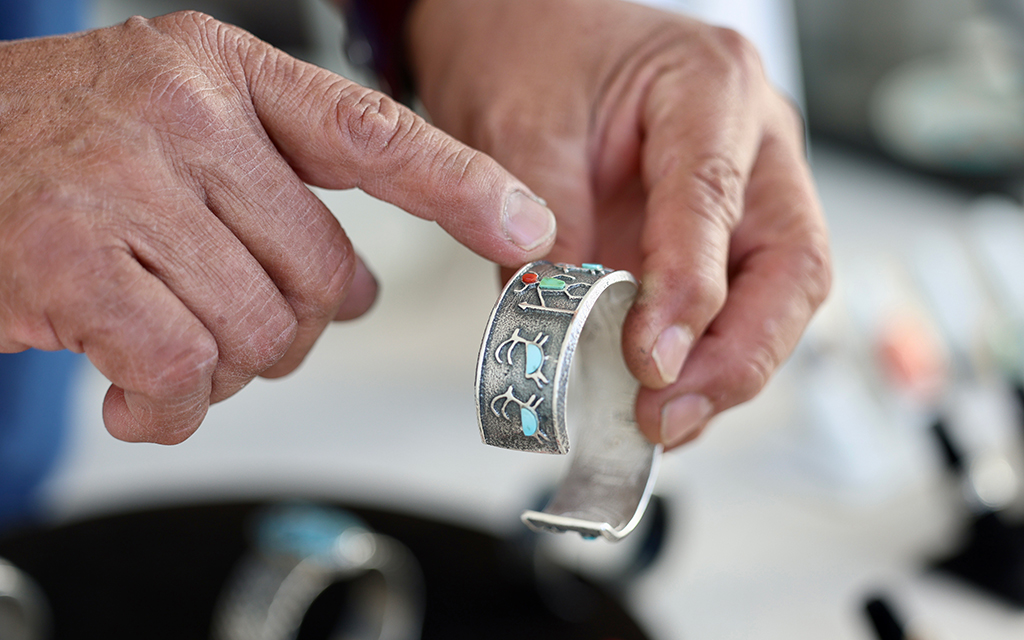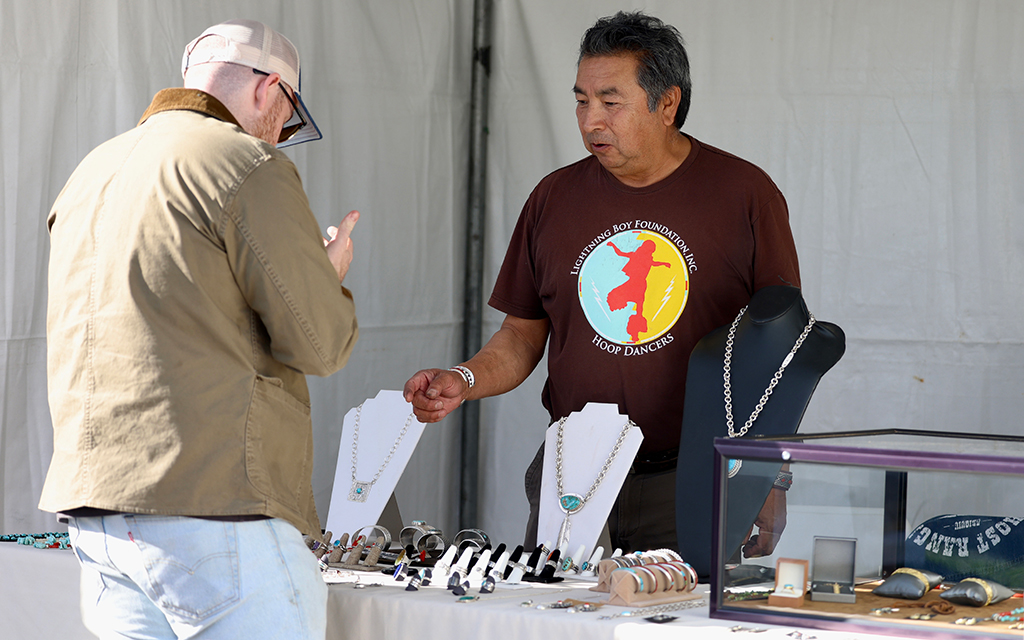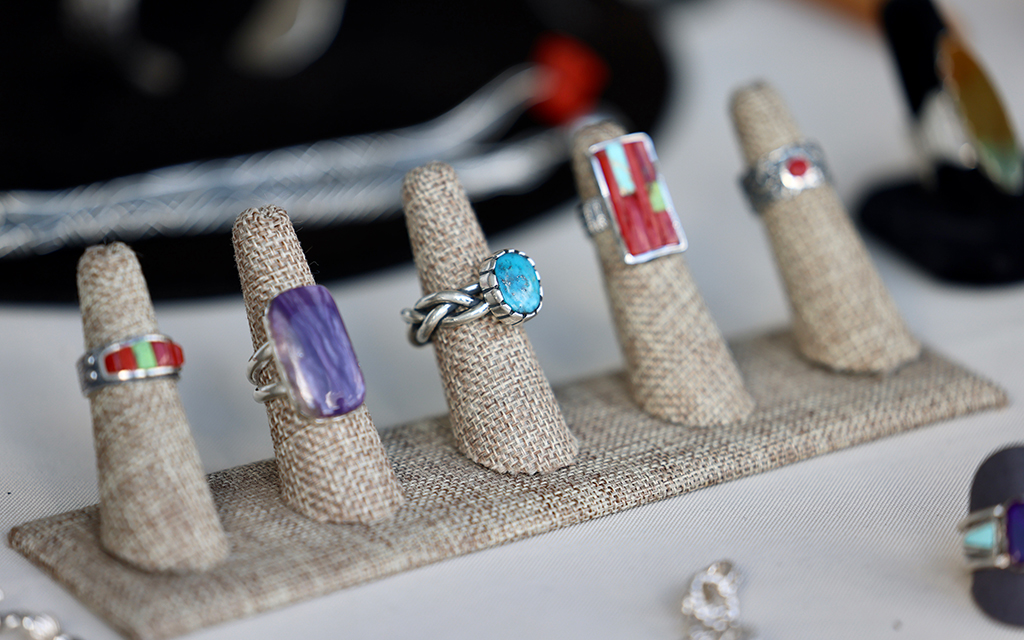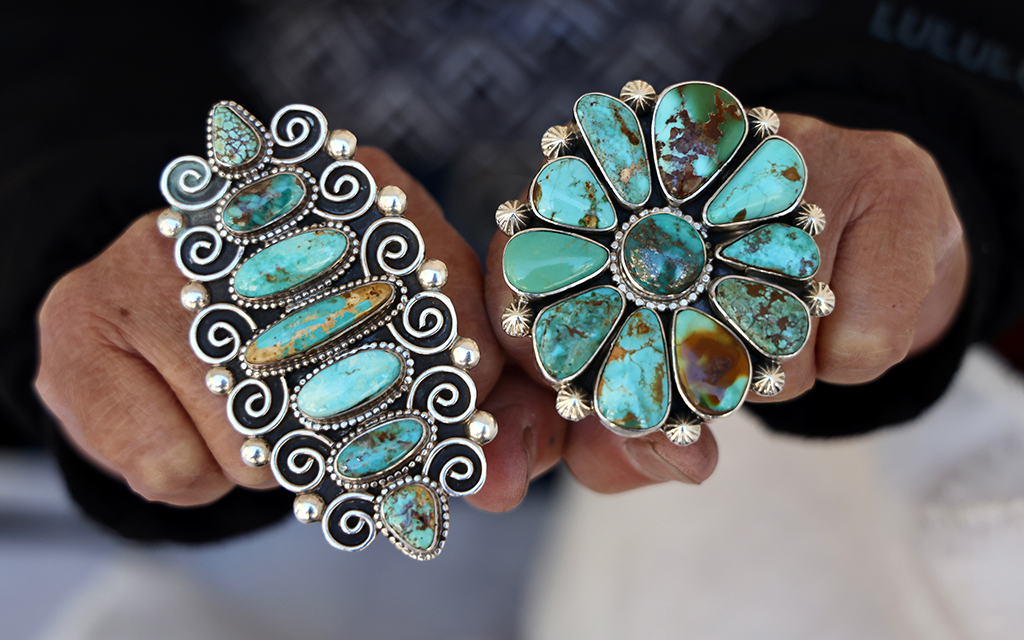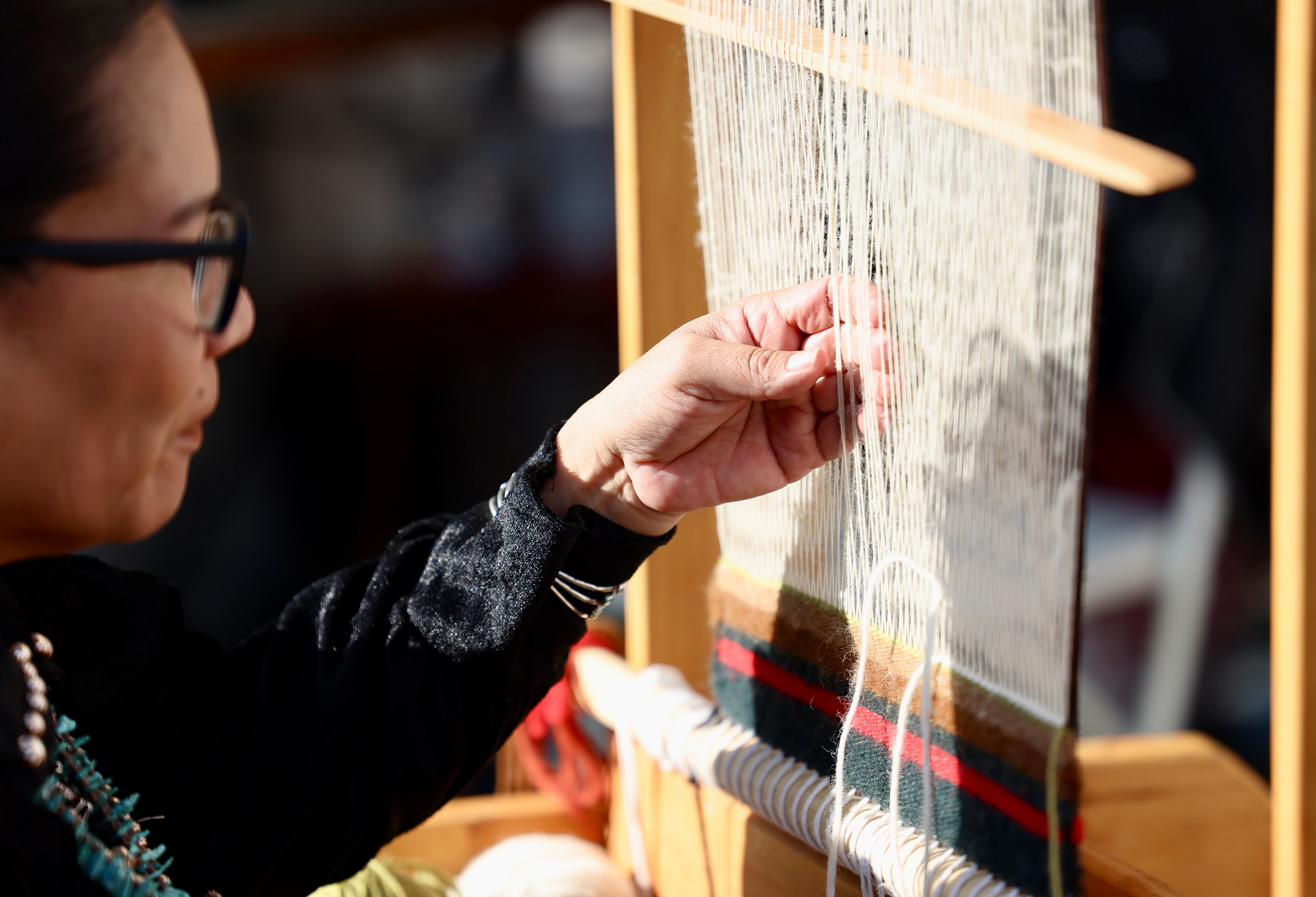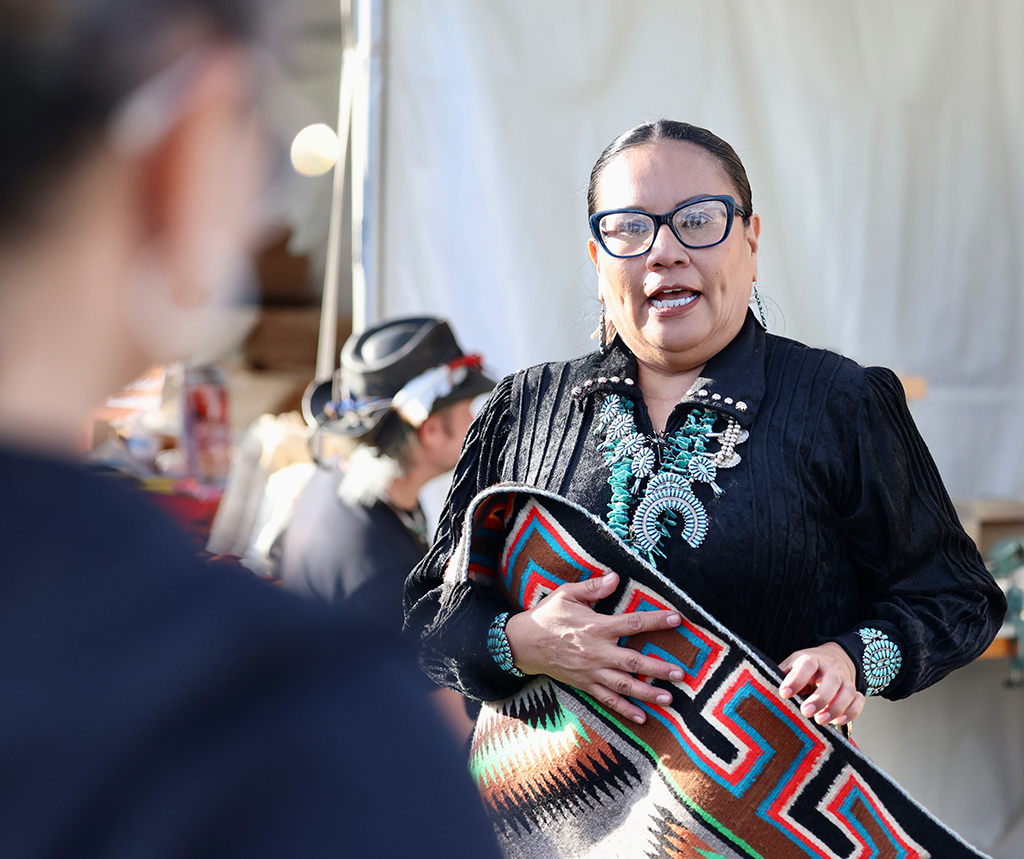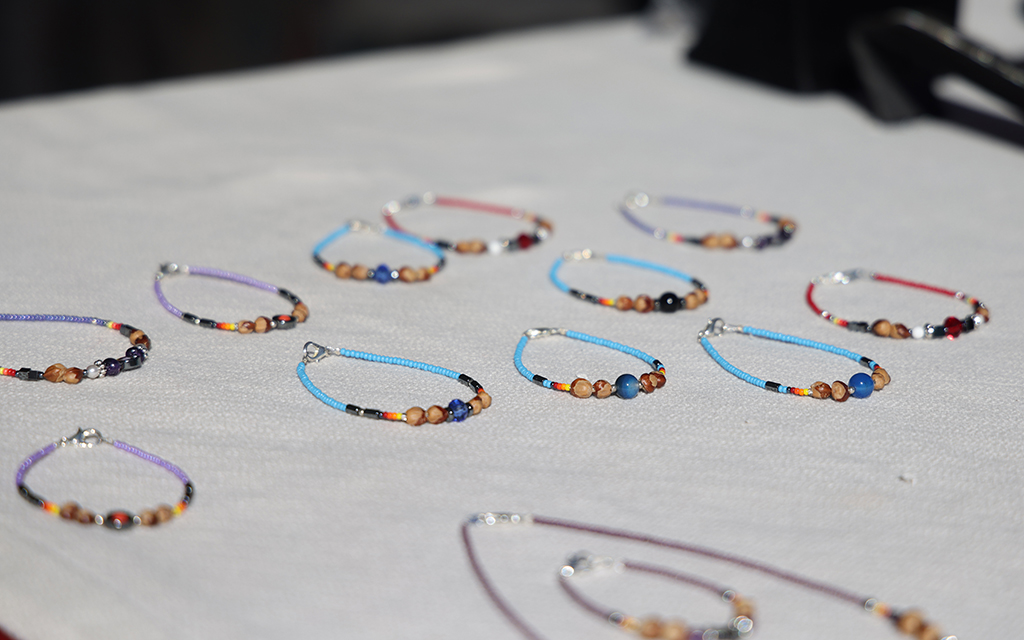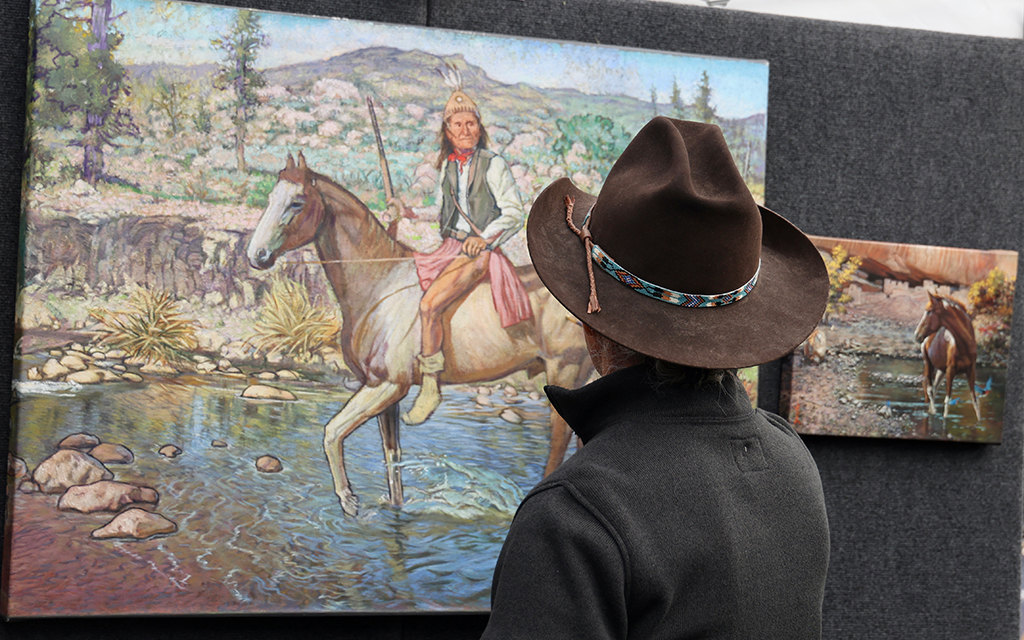Arizona Indian Festival showcases authentic Indigenous art
Arizona Indian Festival showcases authentic Indigenous art
The Arizona Indian Festival in Scottsdale showcases authentic Indigenous art. Artists say knockoffs from overseas undermine their authentic work, which represents their culture.
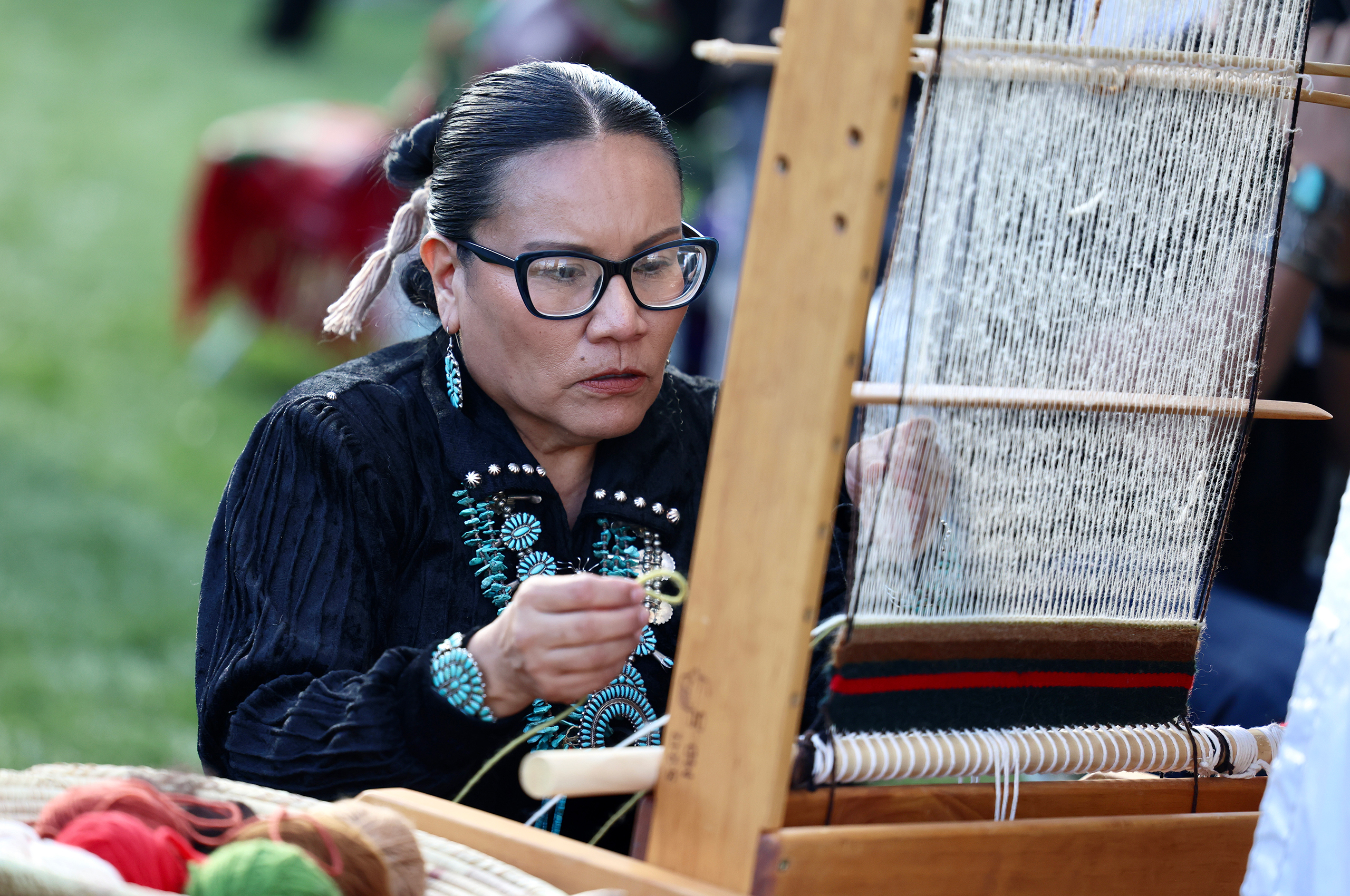
Sonja Morgan from the Navajo Nation showcases her rug-weaving process at the Arizona Indian Festival in Scottsdale on Feb. 3, 2024. (Photo by Marnie Jordan/Cronkite News)
